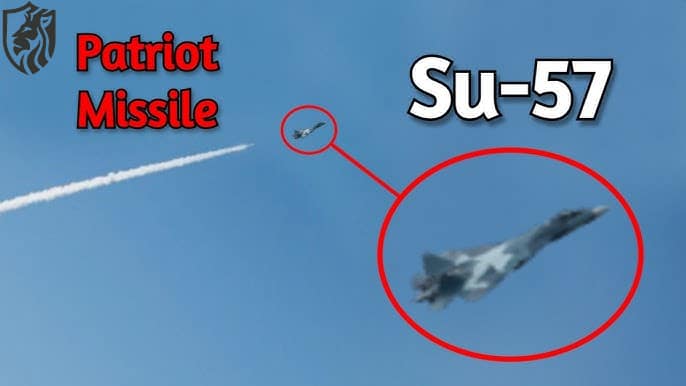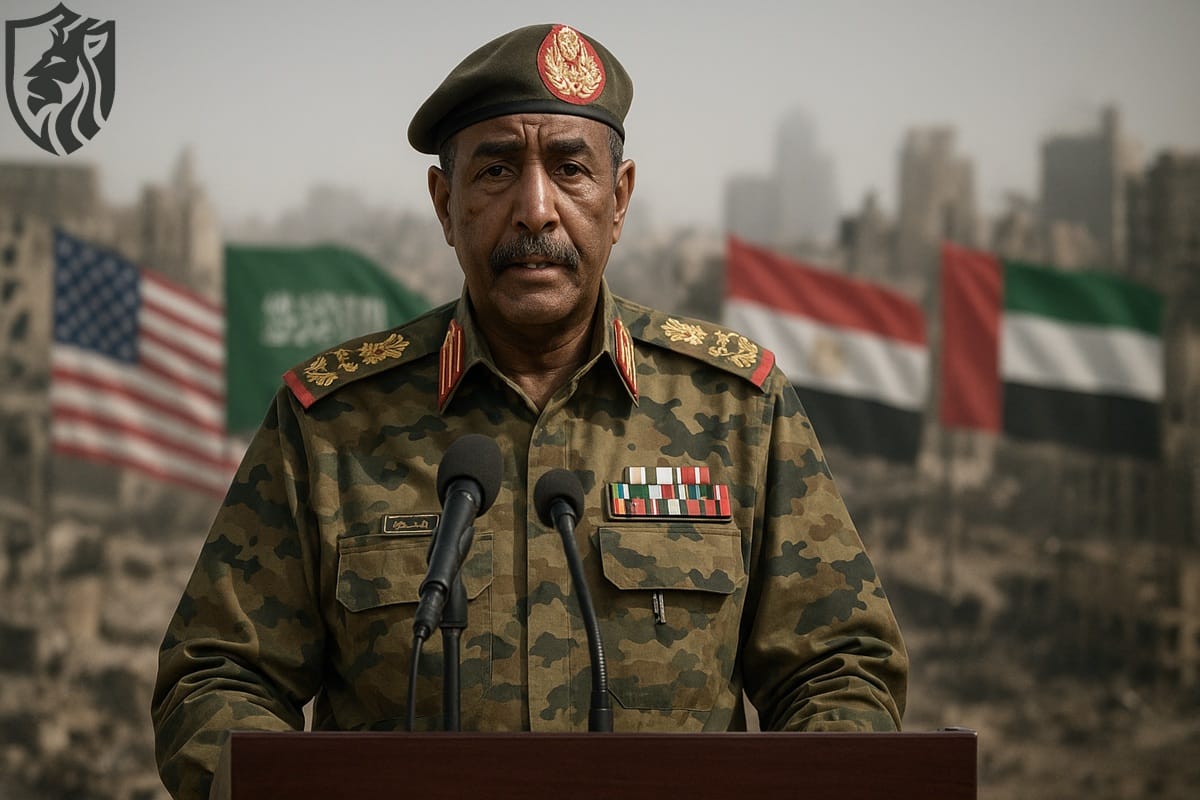
Patriot after Su-57
Observers spotted trucks carrying Patriot PAC-3 MSE systems on Moroccan roads last week, marking a major military advancement. Defense Arabic reported the convoy near a western city, likely heading to an air defense base for testing. Photos show the vehicles en route to the Royal Moroccan Armed Forces’ air defense headquarters in Salé.
The news follows a 2021 Pentagon-approved deal between Lockheed Martin and Morocco’s military for advanced Patriot systems. The delivery is part of Morocco’s goal to modernize its military amid growing regional security tensions. The PAC-3 MSE system can counter missiles, jets, and drones, making it a valuable asset for Morocco’s defenses.
Before full deployment, the system will undergo field testing to ensure it works well in Moroccan conditions. These tests highlight Morocco’s serious effort to boost its national security and military readiness. The appearance of Patriot systems now is part of a longer journey that began several years ago.
In November 2021, the US Department of Defense cleared the sale of the PAC-3 MSE to Morocco. Lockheed Martin, which builds the Patriot system, supplied the latest version, known for its range and precision.

While the exact terms of the agreement, including the number of units and total cost, have not been made public, the United States’ International Trade Administration stated at the time that Morocco had been approved to purchase both Patriot systems and G550 reconnaissance aircraft as part of its defense upgrades.
Ben Guerir Air Center
The convoy’s presence on Moroccan roadways indicates that the delivery phase has begun, with the equipment likely bound for the air defense command center in Salé, near Rabat, rather than the previously speculated Ben Guerir Air Center further south.
Posts on X, where users tracked the convoy’s movement and speculated on its purpose, confirmed this change of location. Morocco’s strategic response to shifting security dynamics in North Africa and elsewhere is evident in its development of the Patriot system.
The PAC-3 MSE, an upgraded version of earlier Patriot models, is designed to shoot down various airborne threats by crashing into them instead of using an explosion to destroy them. According to Lockheed Martin’s technical specifications, the system is capable of engaging tactical ballistic missiles at ranges greater than 35 kilometers and aircraft at distances greater than 160 kilometers.
It integrates with the AN/MPQ-65 radar for 360-degree coverage and can track over 100 targets simultaneously. For Morocco, this capacity might provide a strong shield around important infrastructure—airports, power plants, and military installations—against potential missile strikes or drone invasions, which have become more common in modern conflict.
The historical context of the Patriot system serves as a lens to scrutinize its introduction into Morocco. The Patriot was first deployed by the United States during the Gulf War in 1991, and it rose to fame for intercepting Iraqi Scud missiles; however, its early performance generated disagreement among defense analysts.
Patriot system in Morocco
Over the decades, modifications such as the PAC-3 and its MSE variant have significantly improved the system’s accuracy and scope, making it a key component of air defense for 19 countries, including the United States, Germany, and Japan.
Morocco joins this group as the system’s testing phase begins, a procedure similar to its procurement of other US weaponry, such as Apache helicopters, which were tested in 2016 before receiving final permission. The meticulous approach of the Moroccan military, which involves testing equipment in local settings before full deployment, demonstrates a cautious yet intentional effort to ensure compliance with operational requirements.
Defense observers consider the installation of the Patriot system in Morocco to be part of a larger military buildup. The Royal Moroccan Armed Forces have consistently modernized their armament, acquiring 222 M1A1 Abrams tanks in 2012 and upgrading 162 of those to the M1A2 SEPv3 configuration by late 2023, while also testing HIMARS rocket systems during the African Lion exercises.
The Patriot PAC-3 MSE complements these efforts by forming a layered defense network that integrates existing short- and medium-range devices. Defense Arabic quoted a Moroccan defense analyst who requested anonymity due to the sensitivity of the situation.
“It’s not just about adding a new tool—it’s about building a system that can deter aggression and protect our sovereignty. “The analyst’s observations emphasize the Patriot’s dual importance as a practical asset and a geopolitical signal.
US support
The system’s capabilities need comparisons to competing technology. Russia’s S-400, deployed by neighboring Algeria, has a greater engagement range (up to 400 kilometers) and can handle numerous threats at the same time, placing it as a regional rival to the Patriot.
However, the Patriot’s hit-to-kill precision and integration with NATO-standard equipment provide an advantage in interoperability, which may appeal to Morocco given its close military connections with the United States. Israel’s David’s Sling, with a 300-kilometer range against aerodynamic targets and a primary focus on ballistic missile defense, is another potential regional contender.
While the breadth of these systems varies, Morocco’s selection of the Patriot indicates a preference for a proven, extensively deployed platform backed by US support—a move that may influence its geopolitical alignment in North Africa. The introduction of the Patriot PAC-3 MSE in Morocco has aroused curiosity regarding its potential function beyond improving the country’s air defense capabilities.
One notion gaining momentum among defense analysts is that Morocco’s testing of the system could provide a strategic chance for the US to obtain key intelligence on Russia’s fifth-generation Su-57 fighter jet, which Algeria is reportedly planning to acquire in the near future.
Russia has faced production delays and testing problems, which have stalled the Su-57’s export timeline to Algeria. Although Algeria has not yet deployed the Su-57, its possible arrival adds urgency to Morocco’s military preparations.
With tensions between Morocco and Algeria boiling over Western Sahara and regional dominance, the Patriot’s deployment might allow Morocco, and thus the United States, to study and defeat this advanced stealth aircraft in a real-world environment.
Cold War
The Su-57, touted by Russia as a competitor to the F-35 and F-22, has low-observable technology, super cruise capability, and superior avionics, making it a deadly foe in aerial combat. However, Western militaries have minimal practical experience with its radar cross-section, sensor suite, and electronic warfare systems.
Morocco’s Patriot testing could simulate tracking stealth jets like the Su-57, using intelligence or footage from Russian export shows. With US support, the trials may closely mirror real encounters, helping Morocco prepare for advanced aerial threats. The PAC-3 MSE uses the AN/MPQ-65 radar, which can precisely track more than 100 targets at once.
Its hit-to-kill interceptors aim directly at incoming threats, making it capable of challenging stealth aircraft like the Su-57. This testing offers a rare chance for the US to gather insights into Russia’s latest combat technology. For Washington, it’s a valuable moment to study how modern air defenses might counter Russian stealth platforms.
Using Morocco as a testing ground allowed the Pentagon to obtain data on the Patriot’s effectiveness against stealth profiles without engaging in direct combat, while also cementing its alliance with Rabat. Historical precedent supports this technique; the United States often tested Soviet weapons acquired through third parties during the Cold War.
Morocco’s closeness to Algeria, combined with its expanding US-backed armament, makes it an excellent partner for such an endeavor. A Moroccan military official, speaking to Defense News on the condition of anonymity, hinted at this possibility, stating that joint exercises with US forces frequently involve “hypothetical threat scenarios” adapted to regional dynamics.

US International Trade Administration
This theory depends on future events, especially Algeria’s expected purchase of the Russian Su-57 stealth fighter jet. Russian sources, including TASS, claim that export talks are ongoing; however, doubts persist due to a crash during testing in 2019. India also pulled out of a co-development deal, which added more uncertainty to the Su-57’s global appeal. If Algeria gets the Su-57, Morocco may use Patriot systems to monitor it and relay data to the US.
Moroccan testing could aid the United States in researching stealth threats around the world, even if Algeria never gets the jet. These simulations could support US defense planning from Europe to the Indo-Pacific, where stealth aircraft are becoming more common.
Morocco must train hard to operate the Patriot system, which is highly advanced and complex. The system includes powerful radar, missile launchers, and software—so well-trained personnel are absolutely essential.
US experts are likely to lead the training for Morocco’s forces, ensuring they can handle the tech confidently. Lockheed Martin promised support gear and long-term training for Morocco when they approved the deal in 2021. This setup ensures Morocco can eventually use the Patriot system without needing constant US help. That kind of self-reliance is key to Morocco’s growing defense cooperation with Washington.
The US and Morocco already run joint drills like African Lion and have decades of weapons deals behind them. According to the US International Trade Administration, Morocco is Africa’s biggest buyer of American-made military equipment.
Iskander-E ballistic missile
Reactions to the Patriot’s arrival have been mixed, ranging from praise to healthy skepticism. A US defense official told Morocco World News the delivery was a “natural step” in the growing alliance. The official also said upcoming tests would show if the system suits Morocco’s terrain and climate. Online, X users expressed varying opinions, with some hailing it as a revolutionary development, while others questioned the authenticity of the footage.
Many weren’t sure the convoy really showed Patriots or just older military hardware. Neither the US nor Morocco has confirmed details publicly, which has only deepened the speculation. Still, analysts believe the images match the Patriot system, particularly the recognizable launcher modules. This acquisition could change North Africa’s military balance at a time of rising regional tension.
Algeria has boosted its defense budget to $25.1 billion and operates systems like the Iskander-E ballistic missile. The discovery has raised concerns about a possible arms race between the two North African powers.
The Patriot system might counter Algeria’s missile advantage without either side declaring open hostilities. A North African defense expert told Army Recognition, “This is deterrence, not provocation,” asking not to be named.
Conclusion
Morocco wants to protect its borders and show it’s ready for any possible threat. This goal aligns with Morocco’s efforts to be seen as a reliable US partner in a tough neighborhood. The performance of the Patriot system across Morocco’s deserts and along its coastline will be closely monitored. It has worked well in dry regions—Saudi Arabia used it to shoot down Houthi missiles in Yemen.
But Morocco’s unique landscape and climate will require fine-tuning for the system to perform at its best. Lockheed Martin’s PAC-3 MSE has stopped hundreds of missiles in trials and in real combat, the company says. It even performed well in 2023 when tested against medium-range ballistic missiles in a live-fire trial. If Morocco’s own tests go as expected, the system could be ready to deploy in just a few months.
Moroccan or US officials have yet to announce an official timeline. The story of the Patriot system in Morocco is just beginning and has many chapters still to come. Bringing it from an American contract to Moroccan highways is a major step—but many questions remain.
We don’t yet know its final setup, total cost, or what it means for Morocco in the long run. For now, Morocco’s armed forces are gaining a powerful tool to improve their defense. It may also help strengthen Morocco’s security ties with the United States. As the first trucks arrive in Salé and tests begin, global eyes will watch Morocco’s next move.
References
- Defense News Today
- Pakistan Defence Forum
- Global Security
- Jane’s Defense
- The Diplomat









